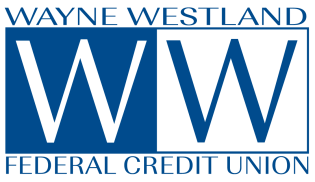 How much is enough homeowner’s insurance? We’ve got some useful tips to help you figure it out.
How much is enough homeowner’s insurance? We’ve got some useful tips to help you figure it out.
You need enough insurance to cover the following:
- The structure of your home
- Your personal possessions
- The cost of additional living expenses if your home is damaged and you have to live elsewhere during repairs
- Your liability to others
The structure— You need enough insurance to cover the cost of rebuilding your home at current construction costs. Don’t include the cost of the land, and don’t base your rebuilding costs on the price you paid for your home. The cost of rebuilding could be more or less than the price you paid or could sell it for today.
Some lenders require you to buy homeowner’s insurance to cover the amount of your mortgage. If the limit of your insurance policy is based on your mortgage, make sure it’s enough to cover the cost of rebuilding. (If your mortgage is paid off, don’t cancel your homeowner’s policy. Homeowner’s insurance protects your investment in your home.)
For a quick estimate of the amount of insurance you need, multiply the total square footage of your home by local building costs per square foot. To find out construction costs in your community, call your local real estate agent, builders’ association or insurance agent.
Factors that will determine the cost of rebuilding your home:
- Local construction costs
- The square footage of the structure
- The type of exterior wall construction — frame, masonry (brick or stone) or veneer
- The style of the house (ranch, colonial)
- The number of bathrooms and other rooms
- The type of roof and materials used
- Other structures on the premises such as garages and sheds
- Fireplaces, exterior trim, and other special features like arched windows
- Whether the house, or parts of it like the kitchen, were custom built
- Improvements to your home — adding a second bathroom, enlarging the kitchen, or other additions that have added value to your home
Standard homeowner’s policies provide coverage for disasters such as damage due to fire, lightning, hail, explosions and theft. They do not cover floods, earthquakes or damage caused by lack of routine maintenance. Flood insurance is available from the Federal Insurance Administration and earthquake coverage is available from private insurance companies or, in California, also through the California Earthquake Authority.
Replacement cost policies — Most policies cover replacement cost for damage to the structure. A replacement cost policy pays for the repair or replacement of damaged property with materials of similar kind and quality. There is no deduction for depreciation, the decrease in value due to age, wear and tear, and other factors. If you purchase a flood insurance policy, coverage for the structure is available on a replacement cost basis.
Guaranteed or extended replacement cost coverage — After a major hurricane or a tornado, building materials and construction workers are often in great demand. This can push rebuilding costs above homeowner’s policy limits, leaving you without enough money to cover the bill. To protect against such a situation, you can buy a policy that pays more than the policy limits.
An extended replacement cost policy will pay an extra 20 percent or more above the limits, depending on the insurance company. A guaranteed replacement cost policy will pay whatever it costs to rebuild your home as it was before the fire or other disaster.
Building codes — Building codes are updated periodically and may have changed significantly since your home was built. If your home is badly damaged, you may be required to rebuild your home to meet new building codes. Generally, homeowner’s insurance policies (even a guaranteed replacement cost policy) won’t pay for the extra expense of rebuilding to code. Many insurance companies offer an Ordinance or Law endorsement that pays a specified amount toward these costs. (An endorsement is a form attached to an insurance policy that changes what the policy covers.)
Inflation guard — Consider adding an inflation guard clause to your policy. This automatically adjusts the dwelling limit when you renew your policy to reflect current construction costs in your area.
Older homes — If you own an older home, you may not be able to buy a replacement cost policy. Instead, you may have to buy a modified replacement cost policy. This means that instead of repairing or replacing features typical of older homes, like plaster walls and wooden floors, with similar materials, the policy will pay for repairs using the standard building materials and construction techniques in use today.
Insurance companies differ greatly in how they insure older homes. Some won’t insure older homes for the replacement cost because of the expense of re-creating special features like wall and ceiling moldings and carvings. Other companies will insure older homes for the replacement cost as long as the dwelling is in good condition.
If you can’t insure your home for the replacement cost or choose not to do so, make sure the limits of the policy are high enough to provide you with a house of acceptable size and quality.
Your personal possessions — Most homeowner’s insurance policies provide coverage for your personal possessions for approximately 50% to 70% of the amount of insurance you have on the structure or “dwelling” of your home. The limits of the policy typically appear on the Declarations Page under Section I, Coverages, A. Dwelling.
To determine if this is enough coverage, you need to conduct a home inventory. This is a detailed list of everything you own and information related to the cost to replace these items if they were stolen or destroyed by a disaster such as a fire. If you think you need more coverage, contact your agent or insurance company representative and ask for higher limits for your personal possessions.
Replacement Cost or Actual Cash Value — You can insure your possessions in two ways. You can either insure your belongings for their actual cash value or their replacement cost.
A cash value policy pays the cost to replace your belongings minus depreciation. A replacement cost policy, on the other hand, reimburses you for the cost to replace the item.
Suppose, for example, a fire destroys a 10-year-old TV set in your living room. If you have a replacement cost policy for the contents of your home, the insurance company will pay to replace the TV set with a new one. If you have an actual cash value policy, it will pay only a percentage of the cost of a new TV set because the TV has been used for 10 years and is worth a lot less than its original cost. Some replacement cost policies also replace the item and deliver it to you. Generally, the price of replacement cost coverage is about 10% more than actual cash value.
If you need a flood insurance policy, you can purchase flood insurance for your belongings. It is only available, however, on an actual cash value basis.
Insuring expensive items with floaters/endorsements — There may be limits on how much coverage you get for expensive items such as jewelry, silverware, and furs. Generally, there is a limit on jewelry for $1,000 to $2,000. You should ask your agent or look it up in your policy. This information is in Section I, Personal Property, Special Limits of Liability. Insurance companies may also place a limit on what they’ll pay for computers.
If the limits are too low, consider buying a special personal property floater or an endorsement. These allow you to insure these items individually or as a collection. With floaters and endorsements, there is no deductible. You are charged a premium based on what the item (or collection) is, where you live and its dollar value.
You can determine the value by providing your agent with a recent receipt or getting the item or collection appraised.
Additional living expenses after a disaster — This is a very important feature of a standard homeowner’s insurance policy. This pays the additional costs of temporarily living away from your home if you can’t live in it due to a fire, severe storm or other insured disaster. It covers hotel bills, restaurant meals and other living expenses incurred while your home is being rebuilt.
Coverage for additional living expenses differs from company to company. Many policies provide coverage for about 20% of the insurance on your house. Some companies will even sell you a policy that provides you with an unlimited amount of loss of use coverage, for a limited amount of time.
If you rent out part of your house, this coverage also reimburses you for the rent that you would have collected from your tenant if your home had not been destroyed.
You should talk to your agent or company to make sure you know exactly how much coverage you have and how long the coverage will be in effect. In most cases, you can increase this coverage for an additional premium.
Liability to others — This part of your policy covers you against lawsuits for bodily injury or property damage that you or family members cause to other people. It also pays for damage caused by pets. It pays for both the cost of defending you in court and for any damages a court rules you must pay.
Generally, most homeowner’s insurance policies provide a minimum of $100,000 worth of liability insurance, but higher amounts are available. Increasingly, it is recommended that homeowner’s consider purchasing at least $300,000 to $500,000 worth of coverage of liability protection.
Umbrella or Excess Liability — You should buy enough liability insurance to protect your assets. If you own property and/or have investments and savings that are worth more than the liability limits in your policy, you may consider purchasing an excess liability or umbrella policy.
Umbrella or excess liability policies provide extra coverage. They start to pay after you have used up the liability insurance in your underlying home (or auto) policy. An umbrella policy is not part of your homeowner’s policy. You have to purchase it separately. In addition to providing a higher dollar amount, they offer broader coverage. You are covered for libel, slander, and invasion of privacy. These things are not covered under standard homeowner’s or auto policies.
The cost of an umbrella policy depends on how much underlying insurance you have and the kind of risk you represent. The greater the underlying liability coverage is, the cheaper the policy is. This is because you would be the less likely to need the additional insurance. Most companies will require a minimum of $300,000 on your home and your car, if you own one.
This article was submitted by the Insurance Information Institute, an organization that provides facts and assistance free of charge to the media, individuals and organizations. Submission of this article does not imply an endorsement or recommendation of the Financial Resource Center site.


